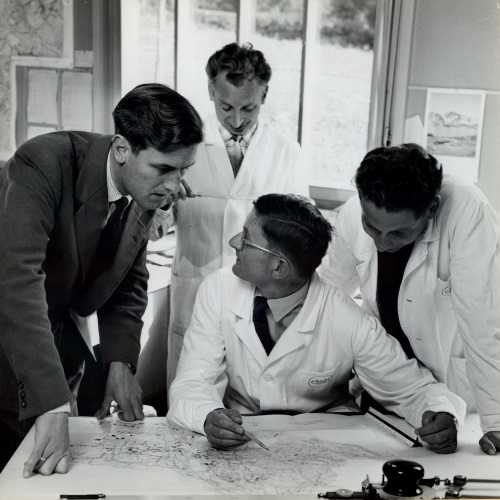Daniele Balduzzi is IT Officer/Archivist and Shiri Alon is Archivist at World Bank Group Archives
A year ago, our colleagues Jeanne Kramer-Smyth and April Miller published a post about the people and process investments required for the Archives of the World Bank Group (WBG) to fully handle both analog and born-digital records. In this post we will discuss how we are defining the digital landscape of the WBG in order to shape and refine our long-term digital preservation strategy.
Planning for long-term preservation of digital content is a challenging task, often resulting in more unanswered questions than definitive decisions. It’s a complex effort, but also an iterative process with a staggered implementation: setting a course for a distant future in a dynamic present requires a solid sturdy boat, a clear map to refer to, and the agility to navigate in uncharted waters.

For an institution as large as ours this may be even more complicated: the WBG comprises five institutions with roughly more than 24,000 employees, consultants and contractors from 174 different countries, stationed in more than 150 offices worldwide, using more than 350 different applications, on more than 20,000 devices, creating tens of thousands of records 24 hours a day.
Inspired to create a Digital Content Review Landscape diagram, we started to investigate the WBG’s existing electronic systems containing institutional records to identify digital formats, document types, and approximate file sizes. While listing and gathering information about these resources, we are also trying to answer additional questions:
- Are they already in the custody of the Archives?
- Do we expect to acquire some of them in the near future?
- Is the content born digital or a copy of an analog original?
- Do these records qualify for long term preservation?
We also assigned a tentative priority index to each resource and grouped them by different content types.
The expected outcome of this ongoing analysis of our digital content is to produce, and keep up to date, a visualization of our digital landscape. We intend to use it as a tool to identify implications for the Archives to manage different digital content types across generations of technology and, subsequently, recommend possible solutions and priorities. In addition, we expect this diagram to be very useful for cross-team communication across our organization.
So far, this effort has been a very intellectually stimulating exercise. Benchmarking and cross-referencing all these data with other sources present interesting results: they suggest possible answers to previous questions, pose new problems to further investigate, and present an array of additional considerations. For example, we can glimpse how our IT portfolio has changed over time, how our business processes evolved, and thus can see trends in our records management needs.
Unfortunately, this exercise and its outcome will not allow us to predict the future, but we do not need to: we simply need to keep monitoring the present while ensuring that we will be able to navigate the uncharted landscape of long term preservation.


Comments
The Digital Content Review process and tools created by Nancy Y. McGovern (for the Digital Preservation Management workshops) can be accessed and downloaded from https://dpworkshop.org/workshops/management-tools/process-results